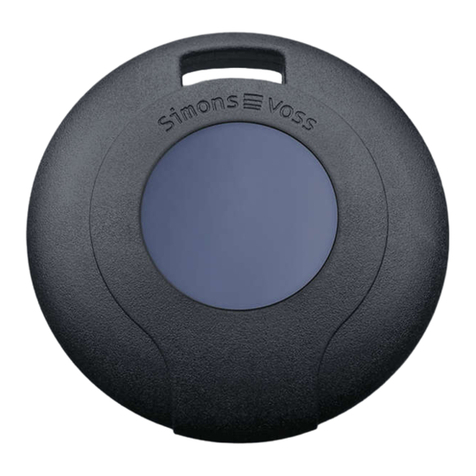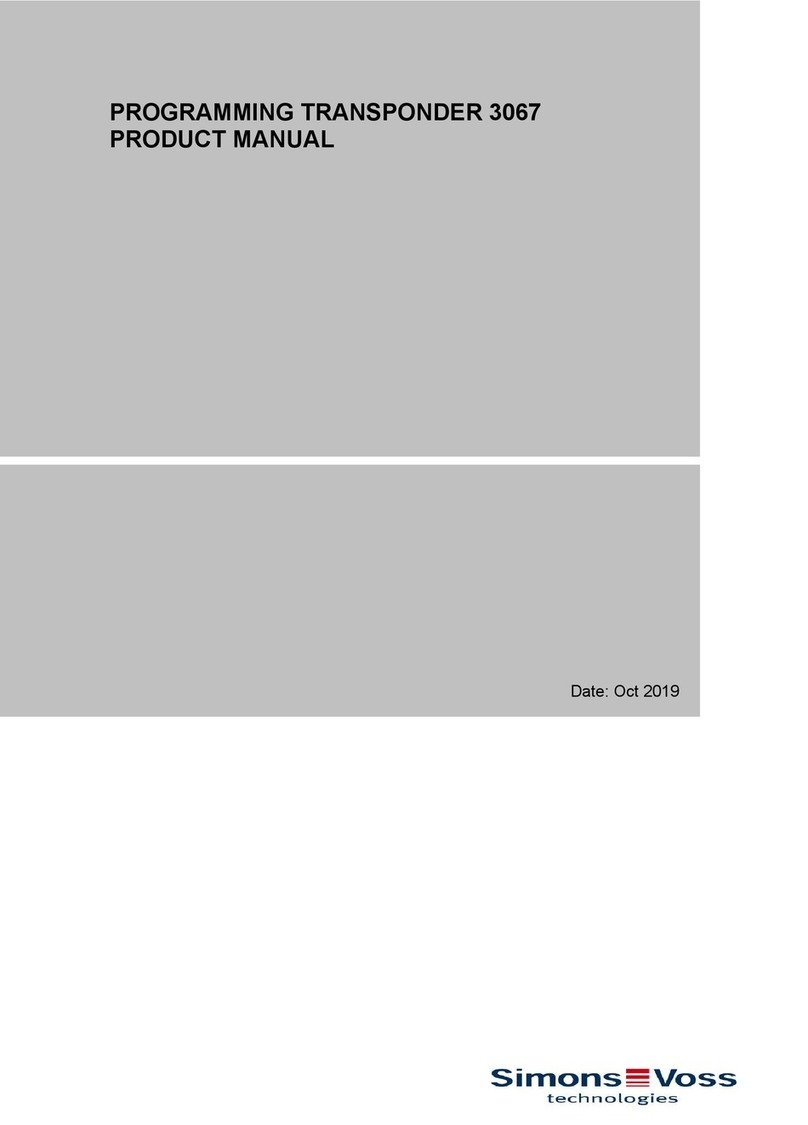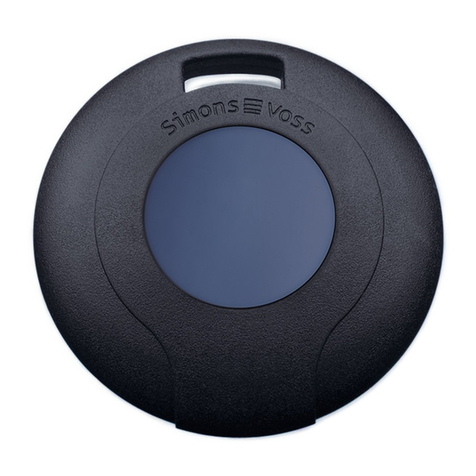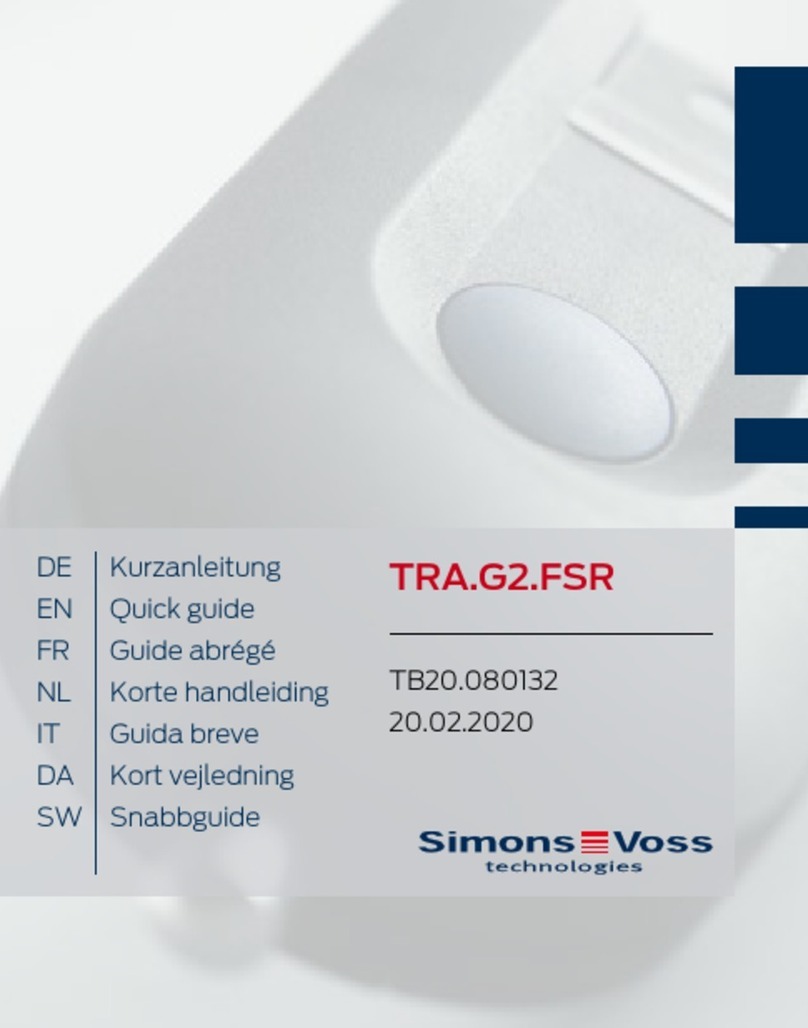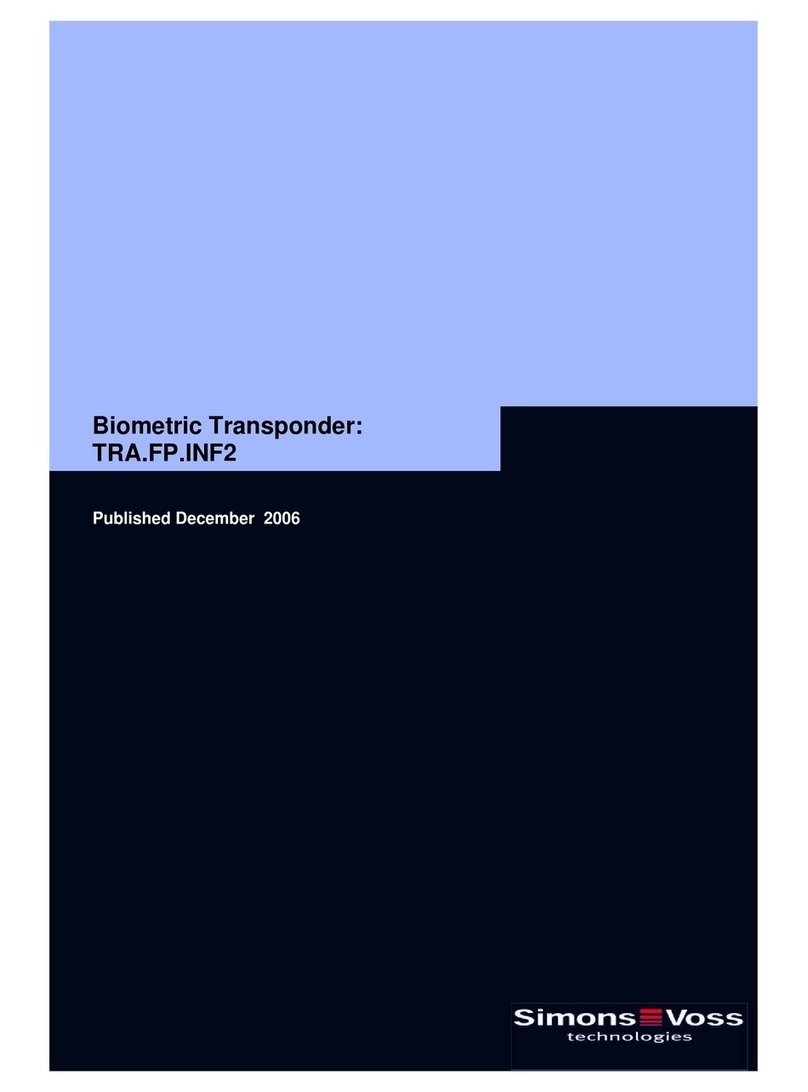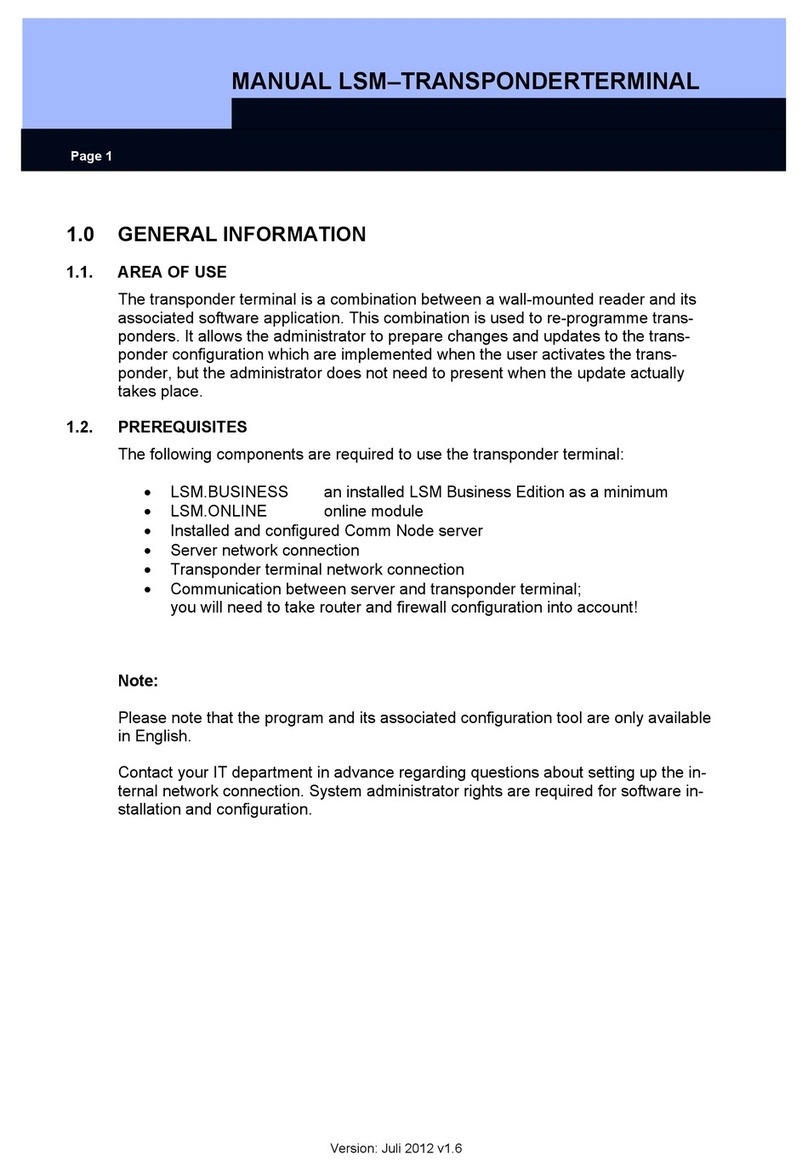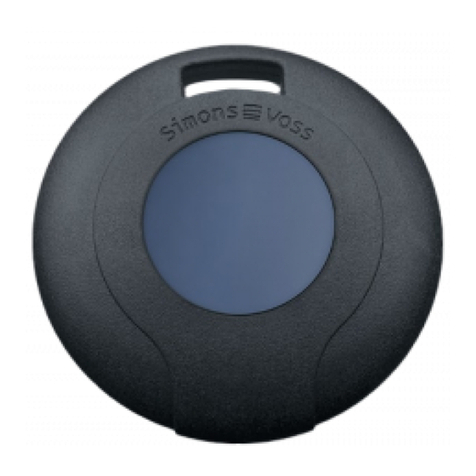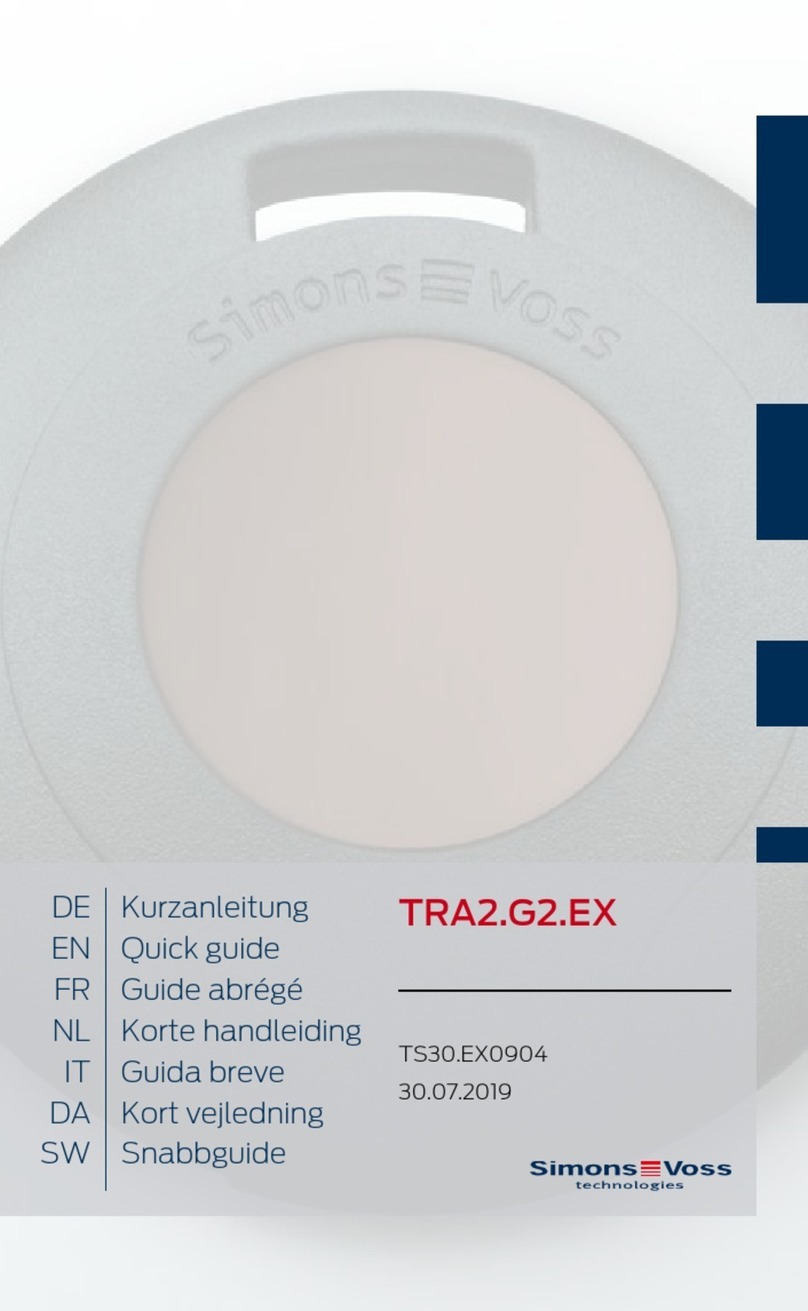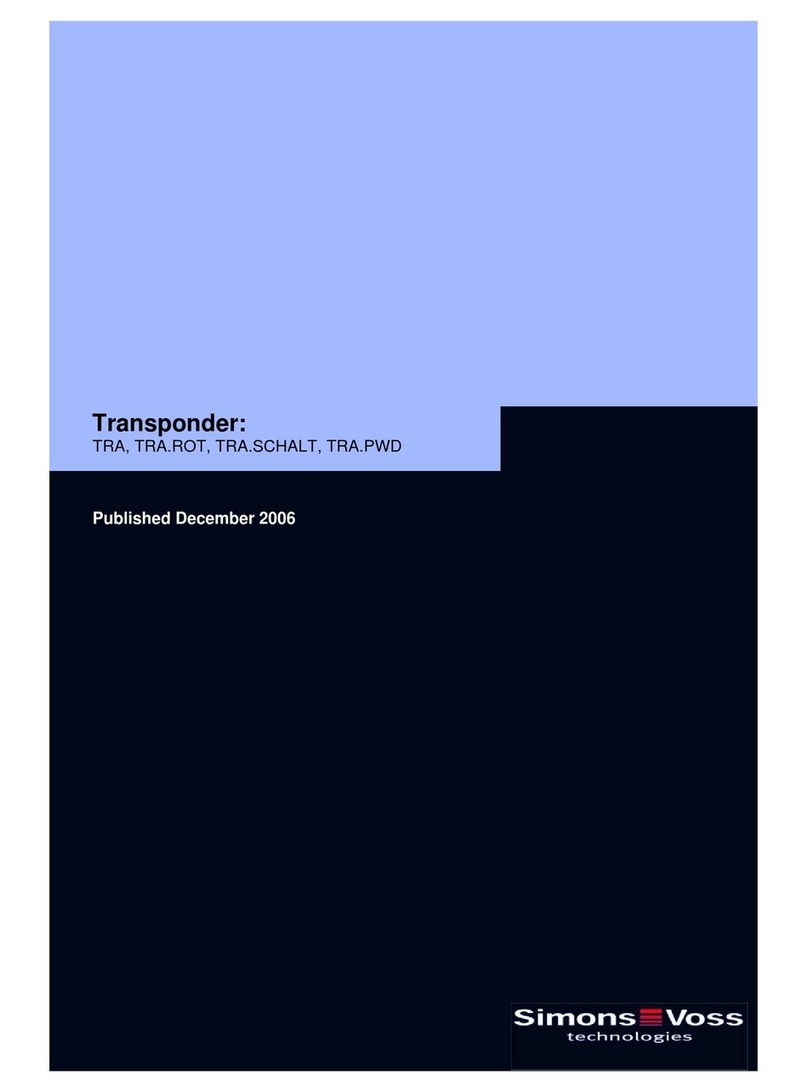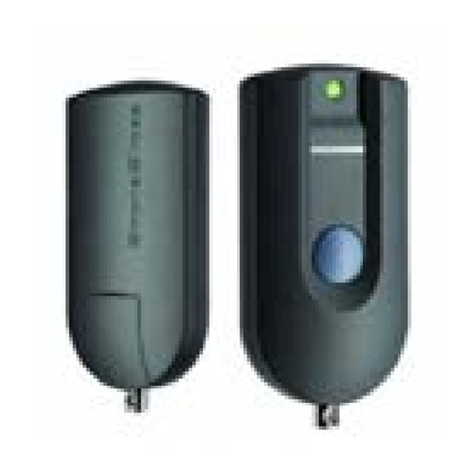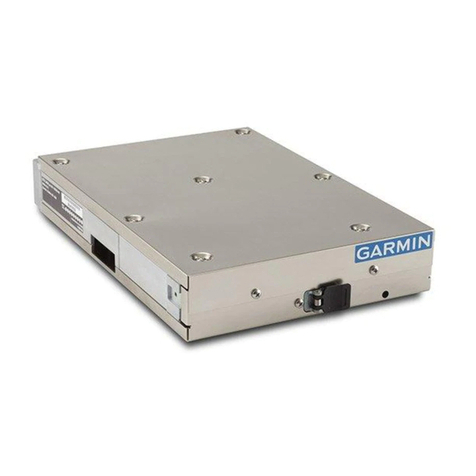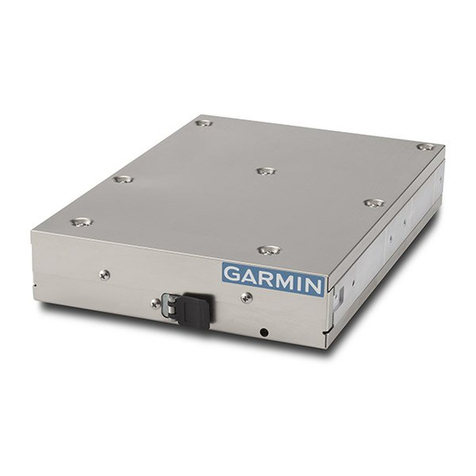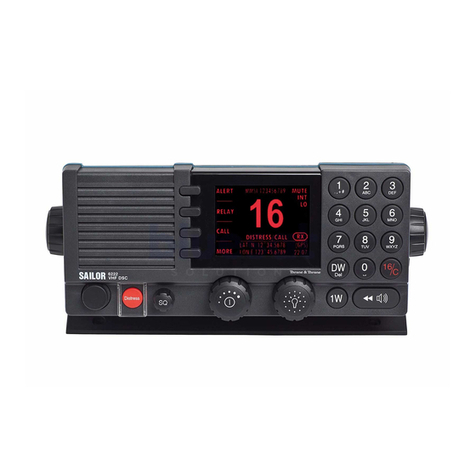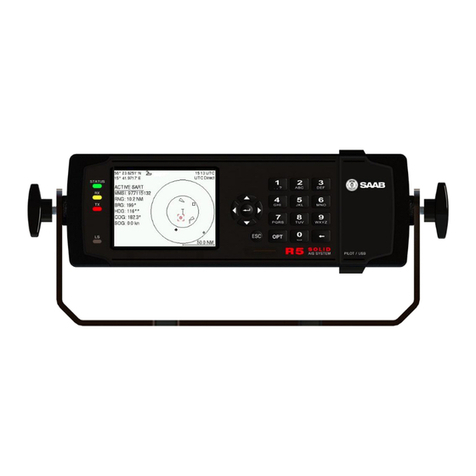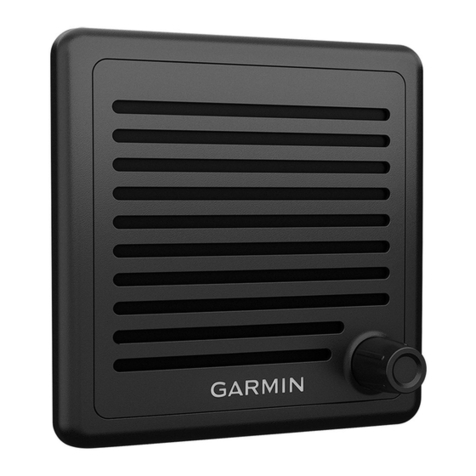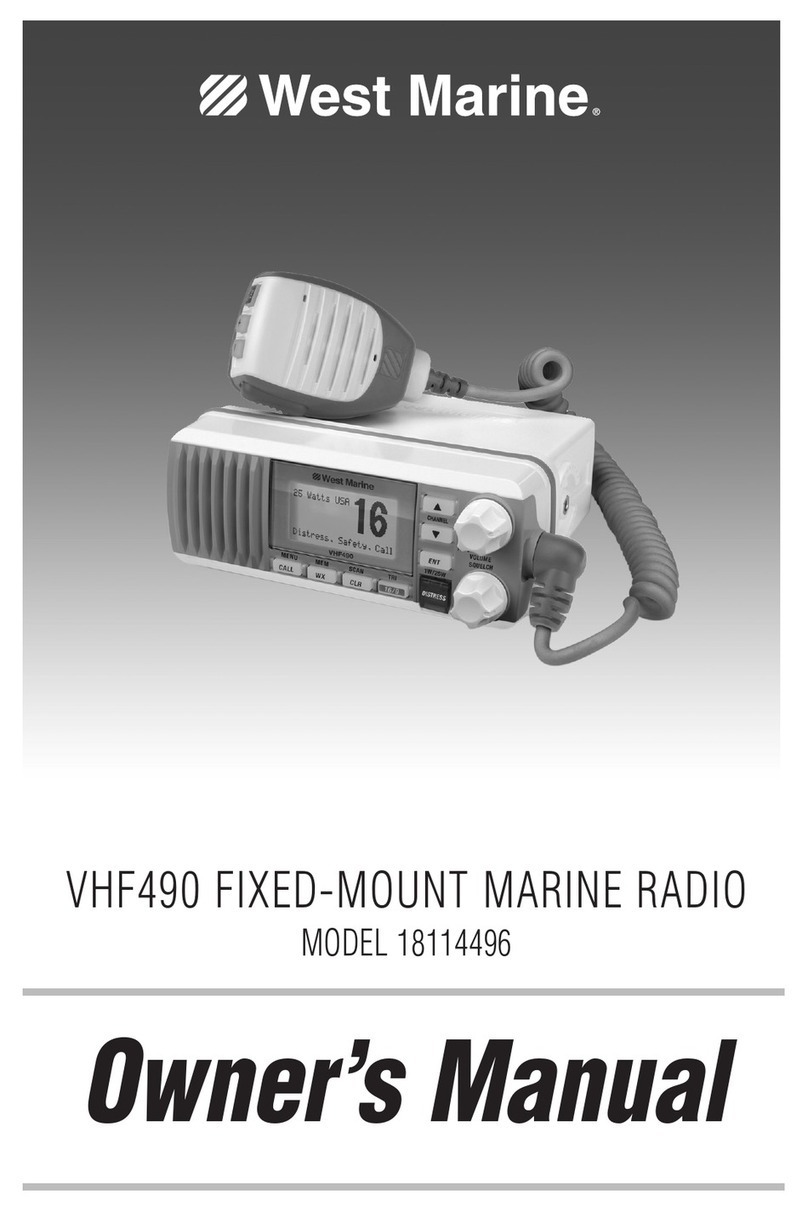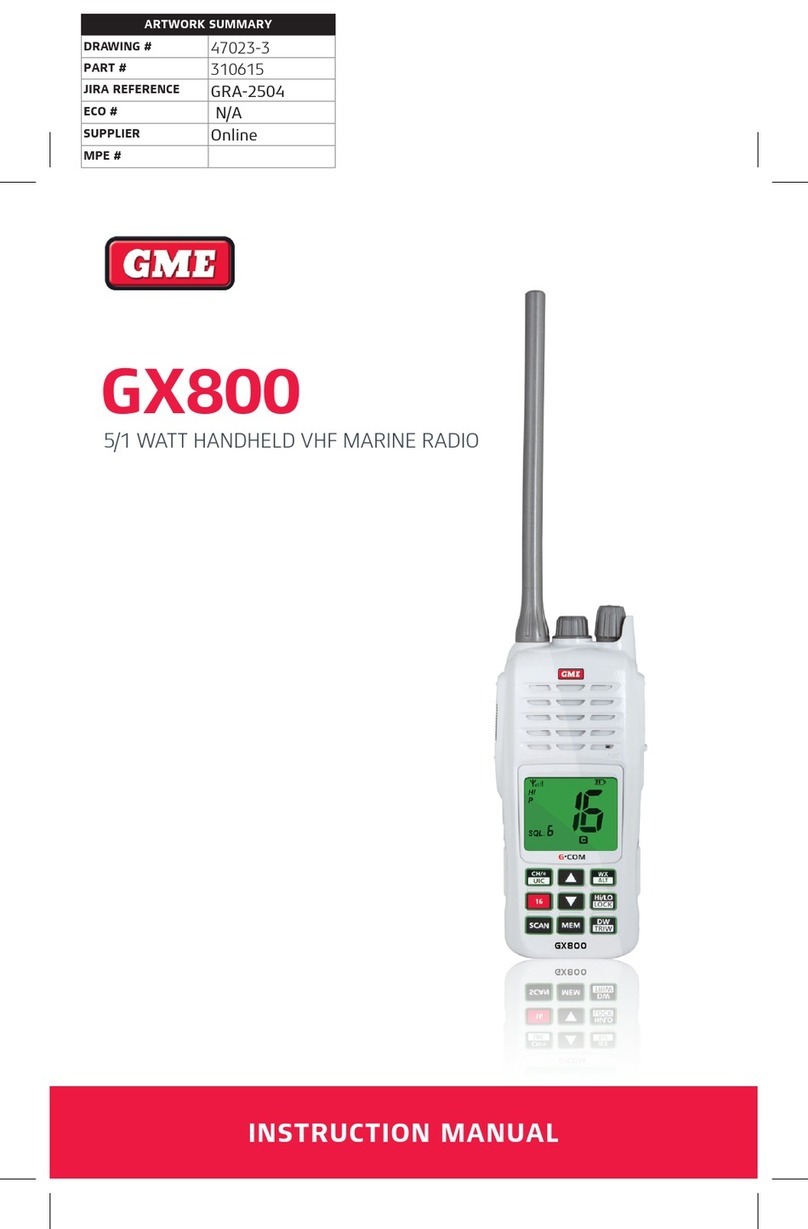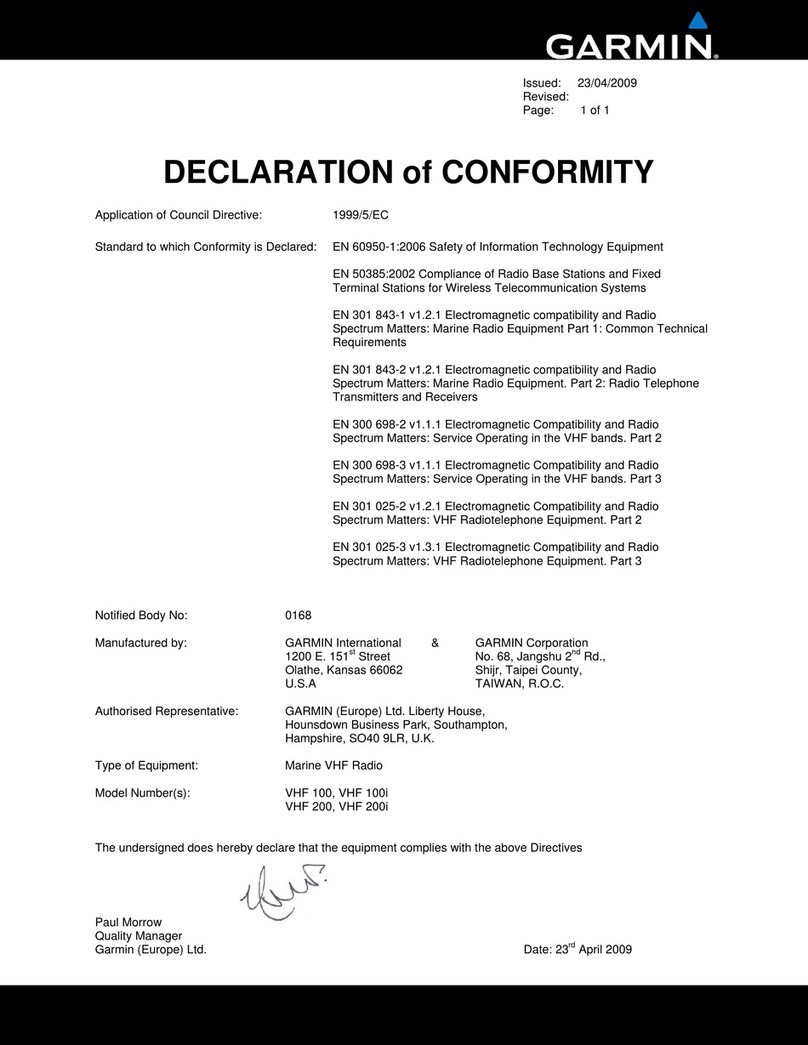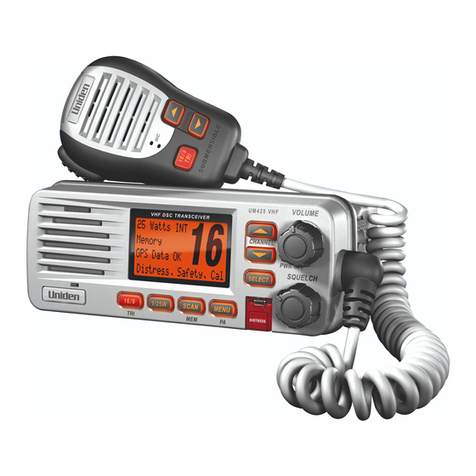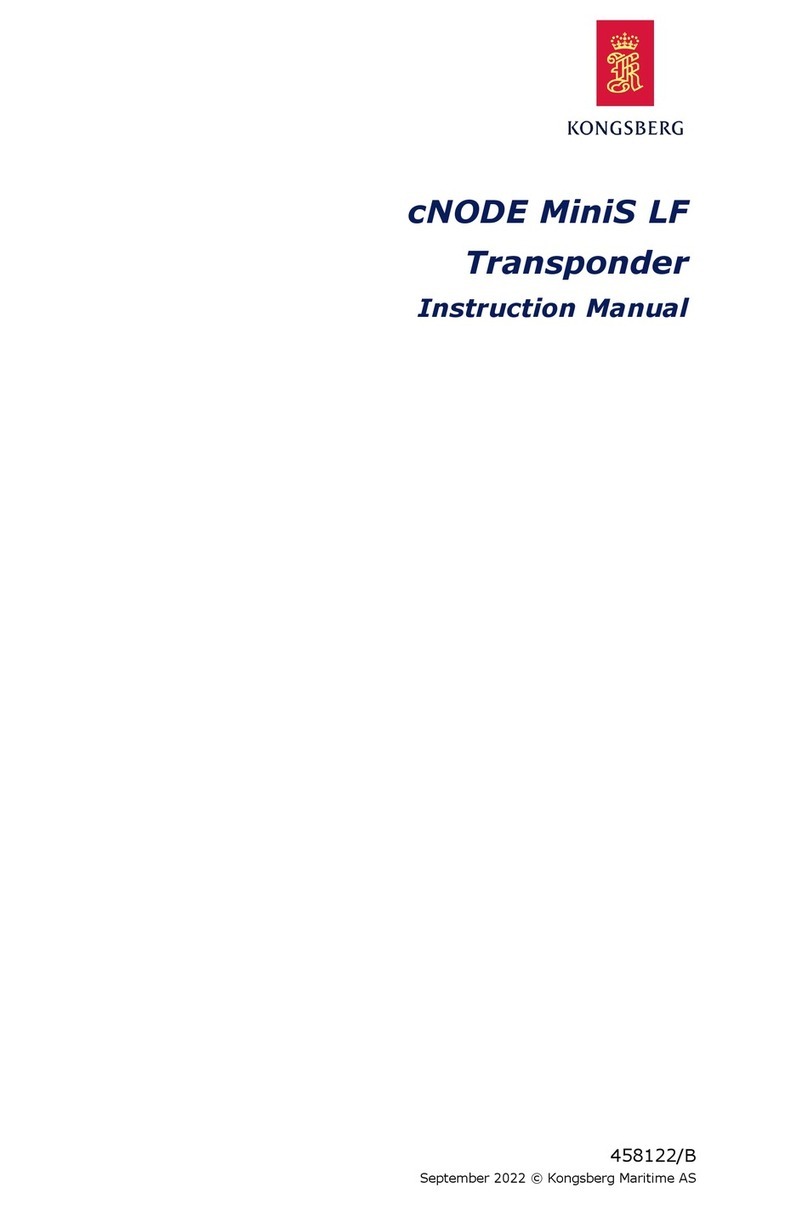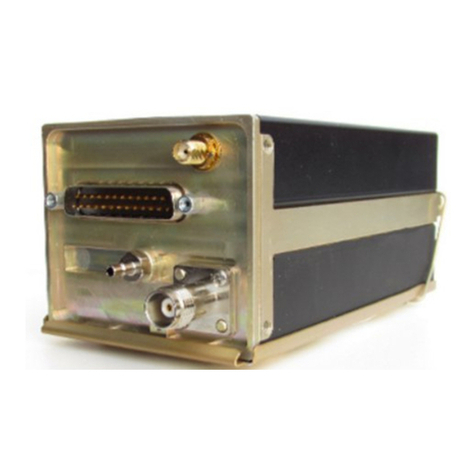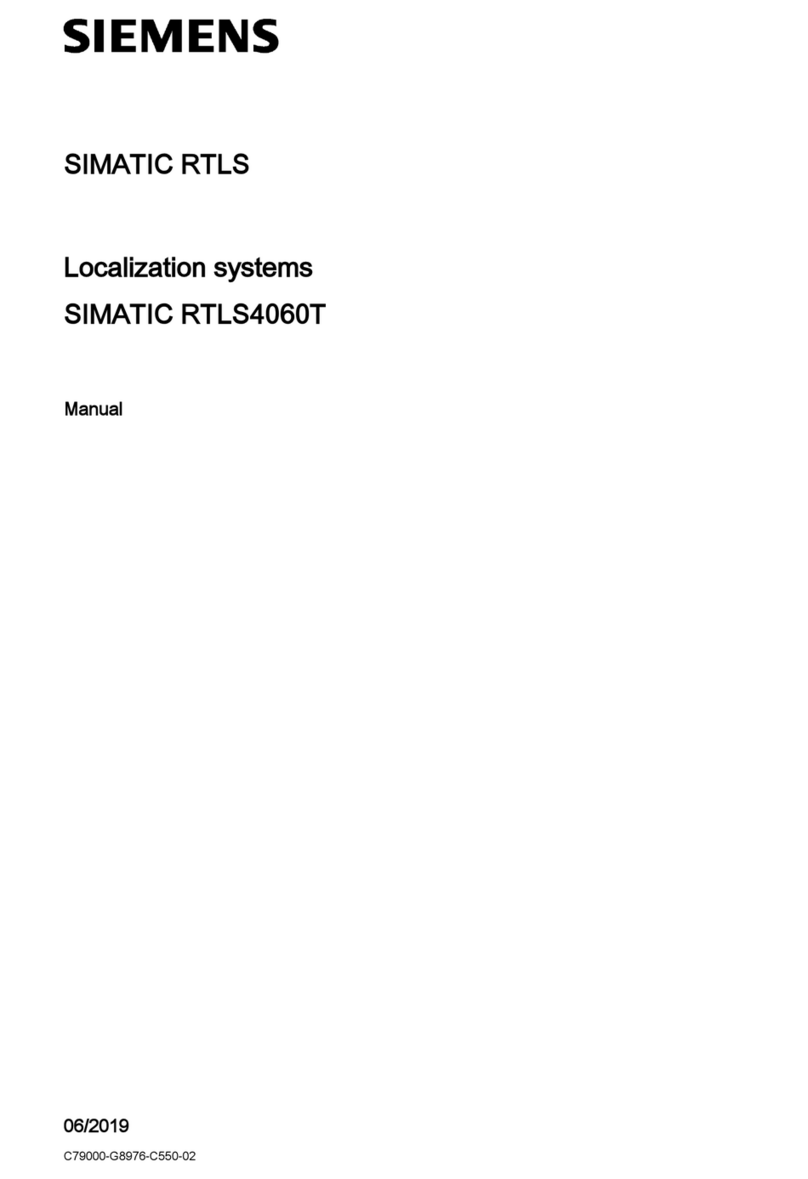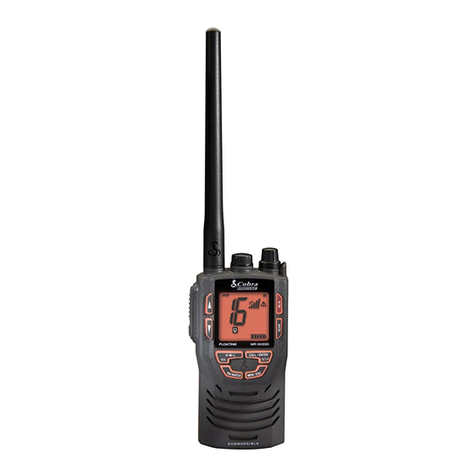
2 General
Transponder 3064 is a digital "key" which is programmed with locking plan
software and functions using contactless, wireless communication. All
functions are activated by pressing a button. These include authorisation
identification and the opening and locking of doors, gates, barriers, furniture
locks and similar items. The transponder communicates with digital
components – cylinders, SmartRelays and activation units – by sending
and receiving constantly changing crypto codes, which ensure that the
system cannot be misused.
As System 3060 functions using active transponder technology, the
transponder features its own power source, a battery. Advantages over
passive technologies include lower power requirements in the cylinder and
the greater operating range.
SimonsVoss supplies different transponder models. These models are
described in this document.
The second transponder generation G2 replaces the first generation G1. G2
features a more efficient communication protocol than G1. It will allow you
to create larger, more efficient locking systems. Authorisations are also
written on both the locking cylinder and the transponder, making
programming more flexible.
A G2 system can also form a virtual network, i.e. authorisations and
blocking lists are written on the transponder and transmitted to the locking
system.
This manual looks at the specific differences between transponders. Read
the G2 manual for more details.
The G2 transponder features both the G1 and G2 protocols and can thus be
programmed for both locking system generations.
2.1 How it works
To carry out an action, the user holds the transponder close to the digital
lock and presses the transponder button. The transponder may be held at
a distance of up to 40 cm for locking cylinders and SmartHandles and up
to 120 cm for SmartRelays. The transponder and locking device then
exchange keys and authorisation data. The user can only perform the
required action, such as opening or locking the door, if the transponder is
authorised for the digital lock.
2.2 Incorporating the transponder in different locking systems
Each transponder can be used in three [G1] or four [G2] completely
separate locking systems, providing no areas of validity are programmed.
Each locking system receives its own password and is managed separately.
Transponder 3064 (Manual) 2. General
4 / 18
